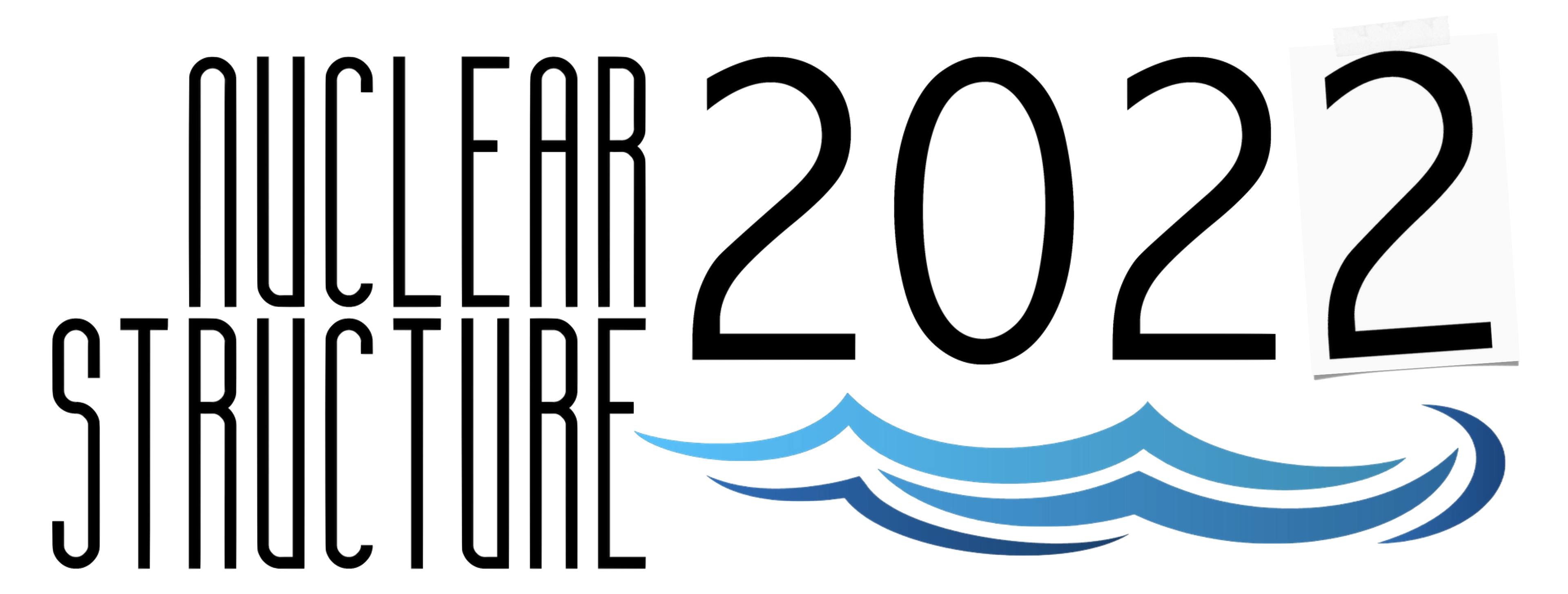Speaker
Description
Isotopes of zirconium (Zr) with semi-magic atomic number $40$ represent one of the most interesting cases of shape evolution in nuclei. The collective behavior of Zr nuclides is very much suppressed at neutron number $50$, where $^{90}$Zr exhibits properties of a doubly-magic nucleus. On the other hand, a sudden onset of nuclear deformation appears at $N = 40$ and $60$ due to the strong proton-neutron interaction between the overlapping partner $\pi 1g_{9/2}$ and $\nu 1g_{9/2}$ ($\nu 1g_{7/2}$) intruder orbitals. The strong shape transition at $N = 60$ happens in Zr ($Z = 40$) and Sr ($Z = 38$) nuclei which are located at the mid-shell between $N = 50$ to $82$. The abrupt shape transition is limited to the Sr and Zr nuclei, while the neighboring Kr ($Z = 36$) and Mo ($Z = 42$) show a smooth shape evolution pattern in terms of the quadrupole deformation.
Among Zr isotopes, $^{110}$Zr with $Z = 40$ and $N = 70$ shell closures of the harmonic oscillator potential could be another quasi doubly-magic nucleus. However, a previous SEASTAR experiment at the Radioactive Isotope Beam Factory (RIBF) provided evidence for rather well-deformed nature in this isotope by measuring the energy of the first excited state through in-beam gamma-ray spectroscopy [1]. Several questions then remain open, such as the possibility of shape coexistence or triaxial deformation in this $^{110}$Zr isotope as predicted by different theoretical models [2-4].
A high-resolution in-beam gamma-ray spectroscopy study of nuclei around $^{110}$Zr was performed within the HiCARI (High-resolution Cluster Array at RIBF) campaign at the RIBF to measure the level lifetimes [5]. The HiCARI array was comprised of several different types of high-purity germanium detectors, which were six Miniball triple clusters from the Miniball collaboration [6], four 4-fold segmented Clover detectors from the IMP [7], a quad-type 36-fold segmented tracking detector from the RCNP [8], and a triple 36-fold segmented tracking detector P3 from the LBNL [9]. This large array was installed at the F8 focus which is located between the BigRIPS and Zero Degree Spectrometer at the RIBF facility. From this experiment, $^{110}$Zr was populated through proton knockout reactions from $^{111}$Nb and $^{112}$Mo. In addition, states in $^{110}$Mo and $^{112}$Mo could be studied with significantly more statistics
In this talk, preliminary experimental results will be represented. Lifetimes of specific levels in $^{110}$Zr, $^{110}$Mo, and $^{112}$Mo are analyzed based on the line-shape method [10]. These experimental results will allow to distinguish between predictions of different nuclear models concerning the shape of $^{110}$Zr, the key isotope for the evolution of collective properties along the $N = 70$ isotones.
[1] N. Paul et al., Phys. Rev. Lett. 118, 032501 (2017).
[2] M. Borrajo et al., Phys. Lett. B 746, 341 (2015).
[3] J. Libert, Phys. Rev. C 60, 1 (1999).
[4] T. Togashi et al., Phys. Rev. Lett. 117, 172502 (2016).
[5] K. Wimmer et al., RIKEN Accel. Prog. Rep. 54, S27 (2021).
[6] N. Warr et al., Eur. Phys. J. A 49, 40 (2013).
[7] W. Hua et al., Nuclear Structure in China 2012, 98 (2013).
[8] D. Weisshaar et al., Nucl. Instrum. Methods Phys. Res. A 847, 187 (2017).
[9] T. Ross, Neutron damage tests of a highly segmented Germanium detector, Master Thesis, University of Surrey (2009).
[10] P. Doornenbal et al., Nucl. Instrum. Methods Phys. Res. A 613, 218 (2010).

